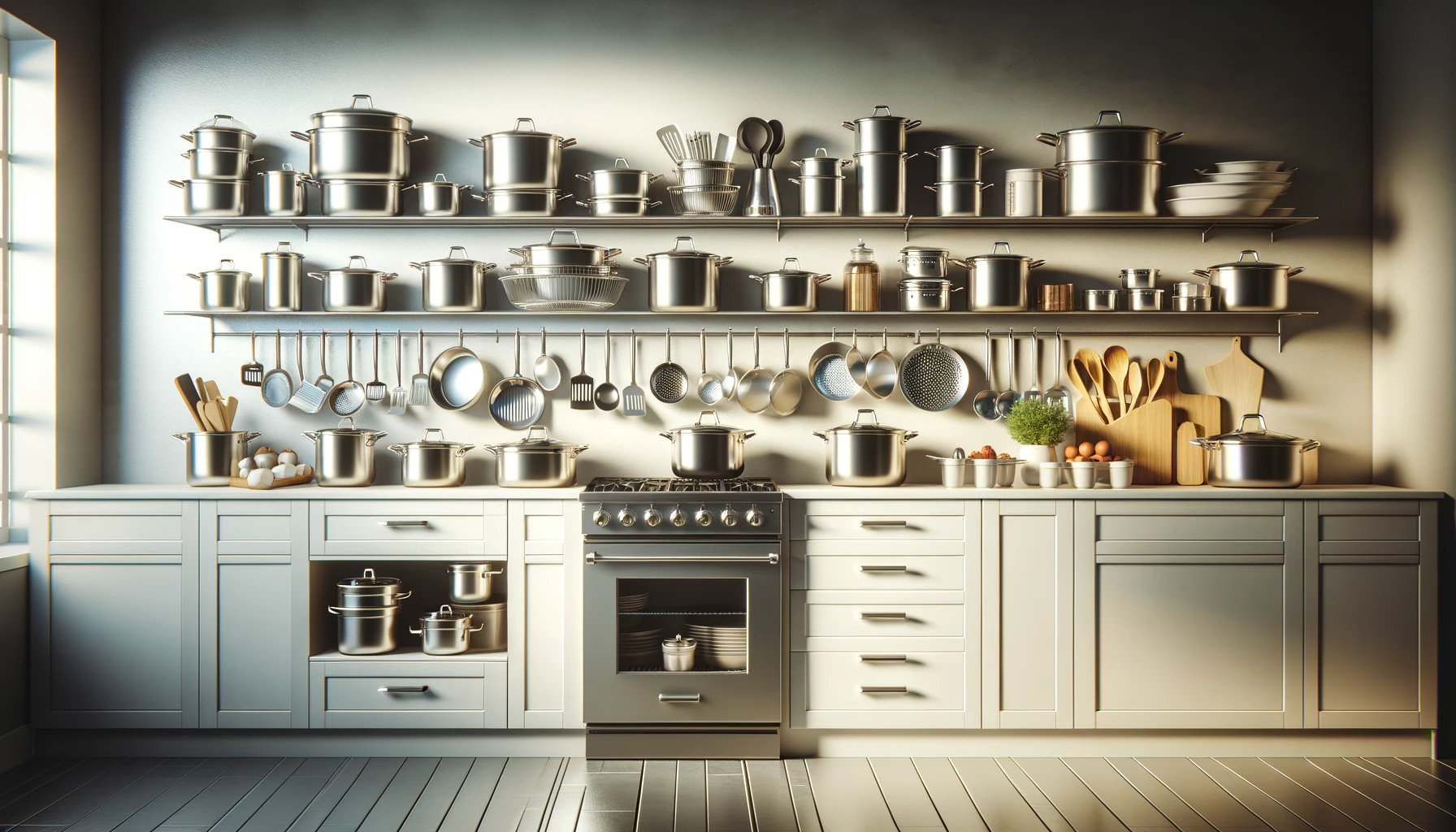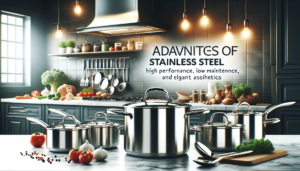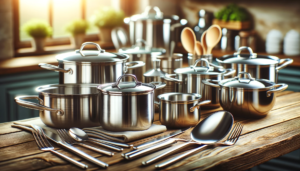Is your cookware collection a hodgepodge of warped aluminum pots and dented stainless steel pans that have seen better days?
When seeking to equip your kitchen with reliable new cookware, two timeless materials —aluminum and stainless steel— both make convincing cases but for different reasons.
Let’s closely compare aluminum and stainless steel’s conductivity, durability, ease of use, cost, and aesthetics to decide which is best suited for your cooking world.
Aluminum vs. Stainless Steel Cookware: Which is Better?
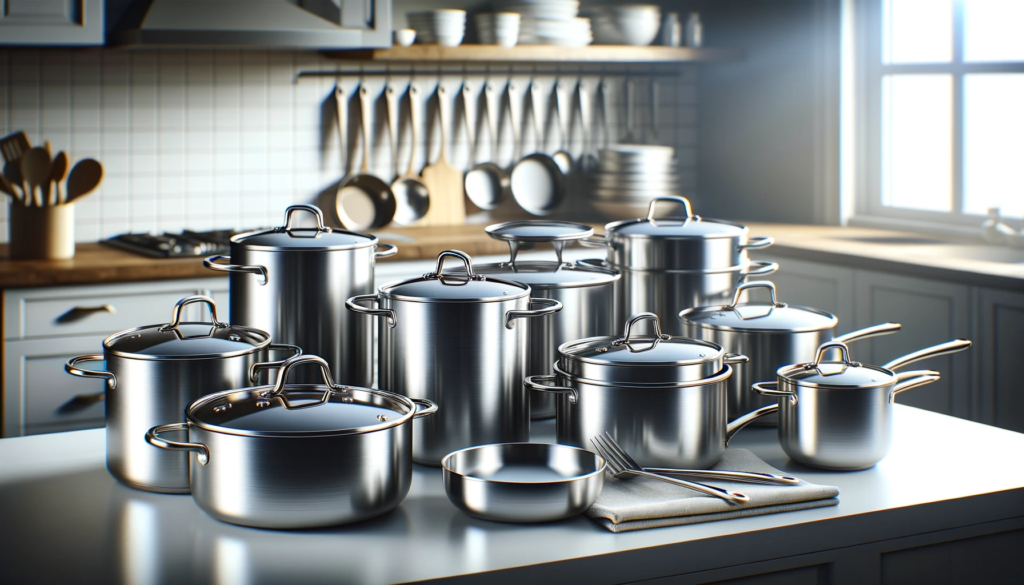
When weighing all factors important for cookware performance and longevity, stainless steel edges out aluminum as the superior material that stands the test of time.
Stainless steel’s durability, ease of maintenance, appearance, and safety make it the wiser investment despite aluminum’s better heat conductivity.
As we analyze further below, stainless steel ultimately surpasses aluminum for most home kitchens’ needs when prioritizing resilience and longevity.
Heat Conductivity
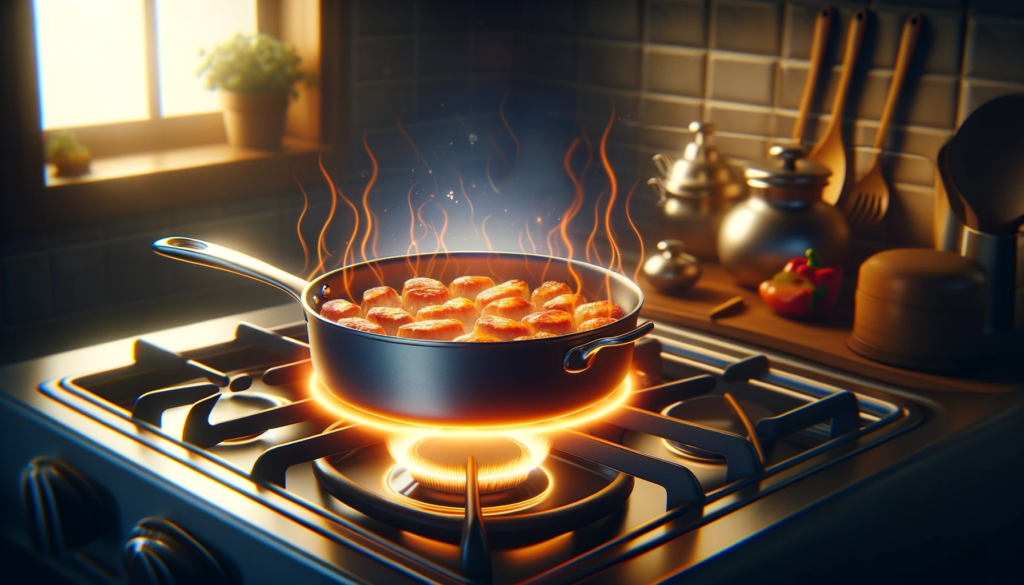
Aluminum is revered for its stellar conductive abilities, meaning it disseminates heat evenly and rapidly across the entire pan surface.
This grants aluminum cookware matchless searing and browning capabilities.
You can achieve the ideal caramelized crust on steaks, chops, and other dishes thanks to aluminum’s precise temperature control.
When you cook with stainless steel over heat, it unfortunately creates more isolated hot spots rather than dispersing warmth consistently.
While these concentrated heat zones enable adequate browning in stainless pans, it takes careful monitoring to avoid scorching food.
The uneven spread of heat with stainless steel means you lose some of that pinpoint searing finesse possible with aluminum.
But you gain a bit more forgiveness in stainless when multitasking, as food is less likely to burn unexpectedly due to fluctuating hot and cool zones.
Reactivity

One common complaint against aluminum pans is their tendency to react to acidic ingredients like tomatoes, vinegar, citrus, and wine.
The pH levels of these foods can react with the aluminum metal itself during cooking.
Over time, this can impart metallic tastes along with discoloration in aluminum cookware.
Have you ever noticed dark streaking or staining in older aluminum pans? This is likely tarnishing from aluminum reacting to years of acidic cooking liquids.
In comparison, stainless steel earns high marks as an admirably non-reactive cooking surface.
Unless the steel becomes excessively scratched up overtime, you don’t have to worry about stainless steel impacting flavors or taking on odors and tastes.
For households that cook diverse cuisines with constantly varying ingredients, non-reactive stainless steel is ideal.
Whether cooking Indian curries brimming with spices one day and tomato-based Italian sauces the next, stainless steel reliability shines through.
The nonstick coating applied to many aluminum and stainless pans these days also prevents reactivity issues.
But when this manmade coating degrades over time, the raw aluminum below has the potential to react.
Uncoated stainless steel maintains its non-reactive merits as long as the interior surface remains smooth.
Durability
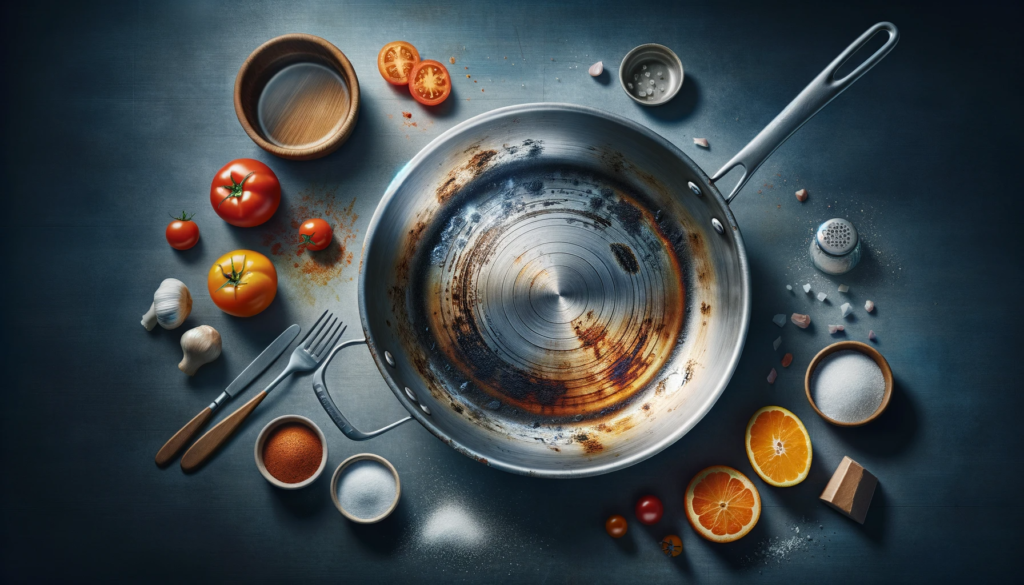
When it comes to durability under daily kitchen wear and tear, stainless steel earns glowing endorsements for its unmatched resilience.
The hardy construction and protective quality of chrome oxide coating on stainless makes it extraordinarily scratch-resistant.
Yes, surface scratches inevitably accumulate on the bottoms and sides of stainless pans from years of cooking and cleaning.
But structurally, stainless steel holds up beautifully, maintaining its integrity through hundreds of usages.
Unfortunately aluminum is more prone to dents, warps, and damage with heavy usage over time.
The softness and malleability of aluminum that makes it such an excellent heat conductor also makes it less durable than hardened stainless steel.
Careless scrapes and drops that indent and distort aluminum pans pave the way for further degradation later on.
Compared to stainless steel’s outstanding longevity, aluminum tends to bend and buckle easier under heat and pressure in the busy kitchen.
Ease Of Cleaning
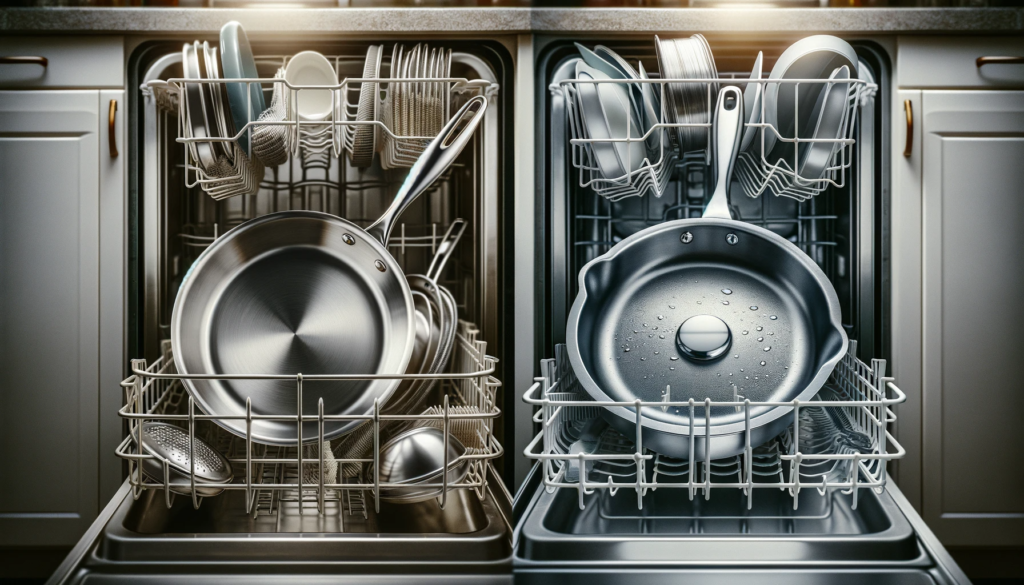
Thanks to stainless steel’s low-stick surface, food residues wipe away cleaner compared to perpetually sticky aluminum.
This means easier post-meal cleanup without excessive scouring required to remove baked, fried, and sauteed debris off stainless steel cookware.
For time-strapped home cooks who loathe scrubbing mountains of dirty pans, stainless steel lightens the burden a bit.
And when it comes to the dishwasher itself, stainless steel withstands hot cycles splendidly over months and years while aluminum corrodes faster under exposure to harsh detergents and high pressure heat.
To safeguard aluminum and extend its lifespan, hand washing is advised instead.
So when choosing between the two metals, stainless steel brings a bit more leeway when it comes to convenient dishwasher cleaning.
Weight
When assessing heft and handling, featherlight aluminum triumphs over heavyset stainless steel any day.
Aluminum’s low density as a metal makes pots and pans considerably lighter than stainless steel equivalents.
So for cooks who stand over the stove for hour after hour braising meats, simmering sauces, or frying up batches of chicken, lighter aluminum brings welcome relief for shoulders, wrists and arms.
Minimizing physical strain in the kitchen helps preserve stamina too.
While stainless steel earns enduring admiration for its might and longevity compared to aluminum, it’s that very sturdiness that makes it substantially heavier to work with.
Lifting hefty stockpots full of water, shifting wide frying pans full of ingredients, and maneuvering giant pots of boiling pasta water intensifies exertion exponentially over the years leading to wear and tear or even injuries.
For cooks with chronic conditions like arthritis, lightweight aluminum makes cooking less painful.
Budget
Dollar for dollar, shoppers can fill their kitchens with far more hardworking aluminum cookware compared to pricier stainless steel sets.
Premium brands like All-Clad and Hestan craft gorgeous stainless cookware in top tier factories, and their price tags reflect that first class workmanship.
While more affordable stainless lines exist, aluminum remains the wallet-friendly choice accessible to novice cooks or those sticking to strict budgets.
Many brands do offer clever hybrid options like three-ply stainless pans which sandwich an aluminum core between durable stainless exterior and interior surfaces.
This triply construction aims to merge the conductive mastery of aluminum with resilient stainless steel into one high-performing pan.
While triply stainless lines cost more than single-layer stainless or aluminum, they promise the pinnacle cooking experience.
Appearance

One area where stainless steel clearly outshines aluminum aesthetically is long lasting luminosity.
The polished and brushed steel finishes of All-Clad, Hestan and other premium stainless collections dazzle with modern glints of silver.
Even after thousands of washes, stainless steel retains its alluring sheen far better than aluminum over the decades.
Stainless makes an ideal design-forward addition to contemporary kitchens where that commercial look is preferred.
While brand new aluminum cookware matches stainless sets with its bright silvery shine initially, hundreds of usages lead to accumulated scratches, stains, and discolorations over time.
However, some home cooks find charm in the unique patina aluminum pans adopt unlike stainless steel’s predictable polish.
Fading aluminum might develop alluring tones like bronze, gold, and charcoal depending on usage patterns.
Cooks who embrace lived-in style may come to prefer aluminum’s maturing hues.
Conclusion
Both aluminum and stainless steel cookware have attractive strengths that suit different cooking needs and styles.
While aluminum conducts heat rapidly for superior searing, stainless steel is more durable over the long haul.
Carefully considering factors like budget, preferred cooking techniques, ease of care, and appearance helps determine which material aligns best with your kitchen priorities.
With the right cookware material matched to your lifestyle, endless delicious recipes await.
